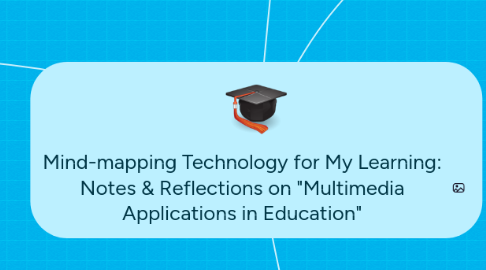
1. Tech for Teaching Toolbox
1.1. Prior Knowledge & Current Usage
1.1.1. D2L (UA Main LMS) - Discussions tool has improved a lot; GradeMark works very well; VideoNote & AudioNote nice but sadly only 3min max
1.1.2. Drupal - Simple website, easy to populate and maintain. Straightforward regarding content and menu structure.
1.1.3. Padlets - Nice and easy, but layout options are unfortunate; not a student-favorite, unless for a warm-up or anonymous activity
1.1.4. Skype - Students so far were more familiar with Skye than with Google Hangouts; great for office hours
1.1.5. Collaborate - Not used for mandatory sessions; too many students cannot get it to run and/or dislike the interface
1.1.6. Google docs - used for group activities
1.1.7. Google sheets - used for feedback surveys
1.1.8. Survey Monkey
1.1.9. Doodle - Making appointments within groups
1.2. Course itself
1.2.1. RSS Reader - news/info organization -- Feedly: very clean and attractive interface
1.2.2. Moodle (UA South LMS) - Instructions (Content) and Grades - Navigation seems much simpler than in D2L, but comparison only possible if more tools would be used.
1.2.3. Mindmeister - conceptual organization, mind-mapping; cumbersome tool bar; auto-formatting often an obstacle
1.2.4. Slack - Asynchronous interaction; Easy to use and intuitive, but feels more informal than it should. File sharing seems tedious.
1.2.5. Collaborate - Synchronous interaction (office hours)
1.2.6. Google Drawings - A great tool for small group collaboration on visualizations. Some functions are familiar from PowerPoint.
1.2.7. Toolbox Project
1.2.7.1. QR Reader - Older, simple technology; free and easy to install and use; great for in-class collaboration and discussion; students love using their smartphones
1.2.7.2. Twitter - Social media tool trying to be professional? First experience is overwhelming, distracting; tweets often too short to enough info to catch my interest
1.2.7.3. VoiceThread - Asynchronous presentation/discussion tool. Limited free trial version. Great for blended text-voice-video interaction, especially in fully online classes.
1.2.7.4. Stay Focusd - Chrome extension that allows customized self-censoring of internet use. Easy to use; syncs across all devices.
1.2.7.5. Got particularly curious about
1.2.7.5.1. Camtasia - Video creation; screen recorder; PowerPoint plugin; allows video editing
1.2.7.5.2. Vimeo - More professional version of YouTube; used by filmmakers and artists. Limited posting option decreases crap. Basic account is free.
1.2.7.5.3. Coach's Eye - Video recording; immediate replay with option to draw/point on video; great for any training that includes movement
1.2.7.5.4. Quizlet - Digital flashcards; large repository of flashcards available or make-your-own approach
1.2.7.5.5. Khan Academy - Free tutorials, lots of videos. Finally need to take the time to actually check it out.
1.2.7.5.6. SMART Notebook ???
1.2.7.5.7. Ted Ed ???
1.3. Desired/Coming up
1.3.1. Panopto
1.3.2. Google Hangouts
1.3.3. Adobe Connect (FA 15)
1.3.4. Wordle
1.3.5. Wikispaces
2. Teaching Application - Creativity: Active learning, learner-centered teaching
2.1. TED talks
2.1.1. TED talks are equated with creativity, innovation, genius... how much is fun, how much opinion, how much science? Need to check selection/invitation process
2.1.2. Findings
2.1.2.1. Robinson: Literacy and creativity go hand in hand; grade inflation; intelligence is diverse, dynamic, and distinct; human ecology and human resources - industrial vs agricultural perspective; revolution against linearity and conformity
2.1.2.2. Svitak: childish as age-discriminatory word; collaborative rules and reciprocal learning
2.1.2.3. Brown: playful exploration, playful building (thinking with hands), and role play (tool for empathy and prototyping experiences)
2.1.2.4. Silver: learning through the body; maker movement
2.1.3. Questions
2.1.3.1. How can we enhance safe, non-conformist and cyclic or interleaved learning environments?
2.1.3.2. What are the spaces, potentials, and limits of establishing trust within the given institutional setting?
2.1.3.3. How do you talk to a stressed, overworked, and highly frustrated faculty member about creativity in their classrooms?
2.2. My lesson idea: rubrics
2.2.1. Think broader: fascination of (course) design
2.2.2. Make it yours! Acknowledge your role as the creator!
3. Awareness & Information
3.1. Online Communication / Digital Citizenship
3.1.1. Navigation of numerous online resources
3.1.1.1. Select vetted resources to share with students a) for information, and b) as teaching aids
3.1.2. Conceptualization of policy statements
3.1.2.1. Application to teaching (syllabus): definition of communication channels; safety concerns; netiquette
3.2. Learning Resources ("Keeping Current"): Categorize, use selectively, establish rhythm to approach info - here: RSS feeds
3.2.1. CoolCatTeacher RSS feed: Almost daily blog by Victoria (Vicki) Davis, a school teacher. It contains short posts referencing Davis' short podcasts (usually interviews), inspiring thoughts, and some articles from other sources.
3.2.2. Stephen's Web OLDaily RSS feed: Blog by Stephen Downes who is a philosopher-journalist and Edu-IT researcher. Up to several posts almost daily, consisting of a short summary/commentary of another source. High variety of topics.
3.2.3. Faculty Focus RSS feed: Teaching Blog by Maryellen Weimer, expert on learner-centered teaching. It covers major topics of instruction, generally with one blog post a week.
4. Motivation & Affect
4.1. Environment & Participation
4.1.1. Clear and simple division in instructions site (Moodle) and interaction site (Slack). Both: easy navigation - Quick familiarity and comfort
4.1.2. 7 projects in 5 weeks, often interwoven --> spacing, scaffolding and interleaving
4.1.3. Highly independent work paired with open sharing of results and frequent check-ins
4.1.4. Attrition in chat participation via Slack: posted findings and brief comments; little deeper discussion
4.1.5. Learner-centered teaching: students can often choose tools for different projects; lots of exploration and evaluation; responsibility to share new and growing expertise
4.2. Cognitive and affective processing of applications
4.2.1. Concept mapping
4.2.1.1. Organizing understanding ... or just as well organizing instruction?
4.2.1.2. My visual notebook - reflective purpose (learning journal)
4.2.1.3. What good is it if it is too big to print or otherwise store outside the web? [reactionary thought?]
4.2.2. Infographics
4.2.2.1. Expressing information... or just visualizing numbers?
4.2.2.2. What does "information design" mean to a Humanities/Social Sciences person? Where is the "text"?
4.2.2.3. Self-Observations: Feeling "lost" in many of the exemplary infographics (both in layout and purpose). Tendency to resort to concept mapping and poster-layout.

